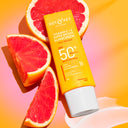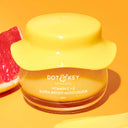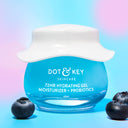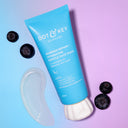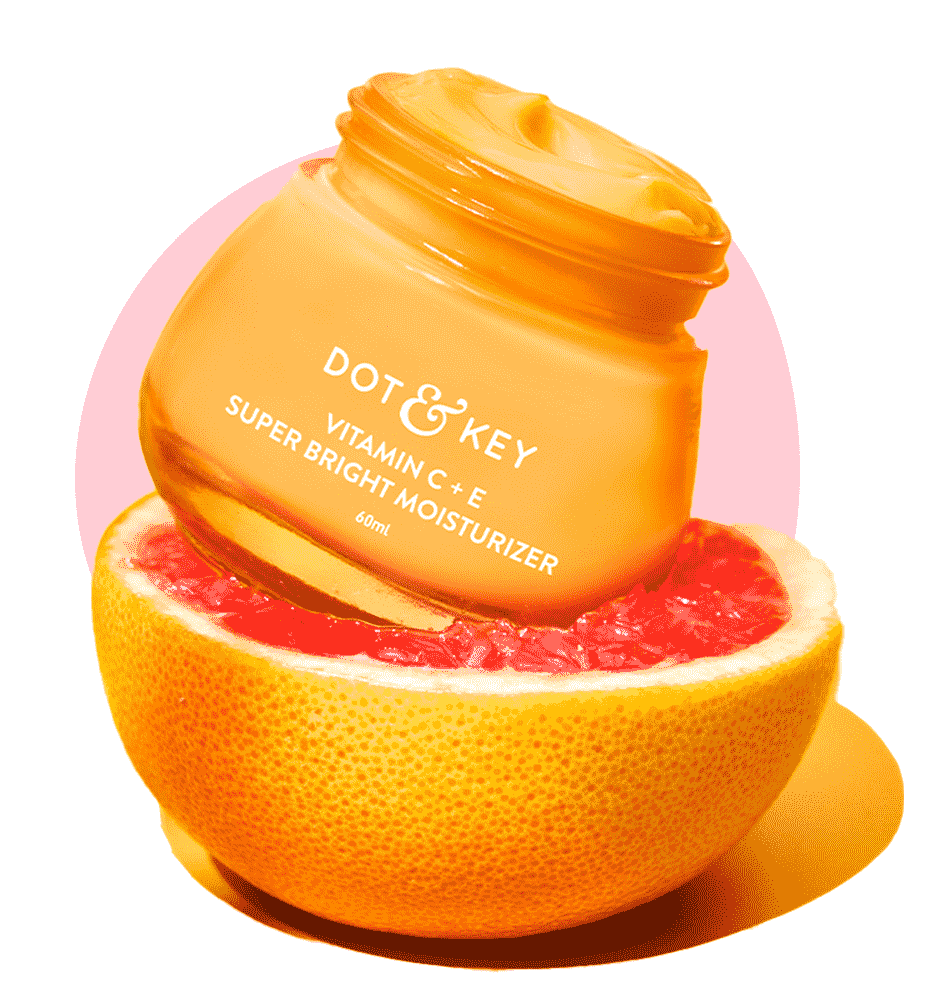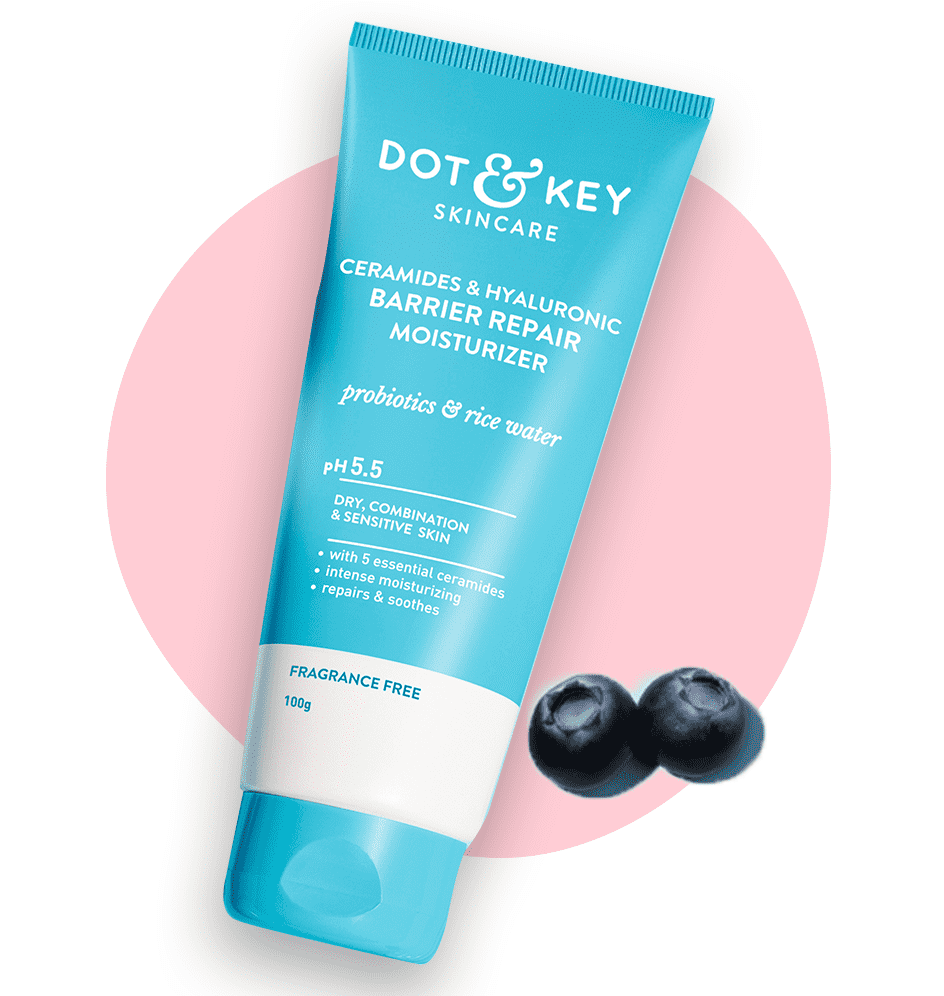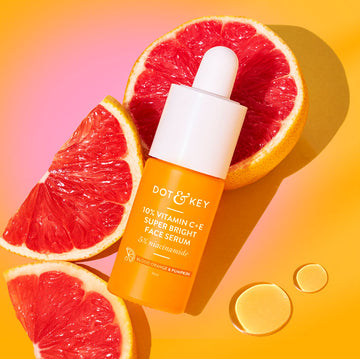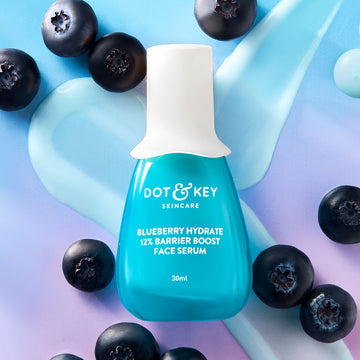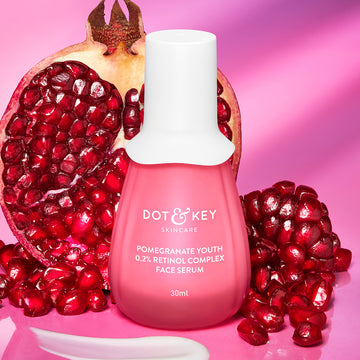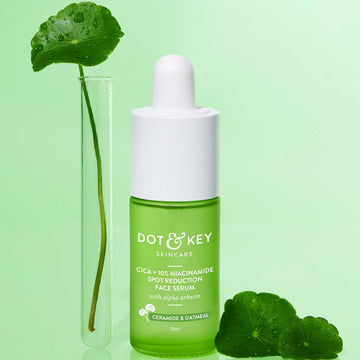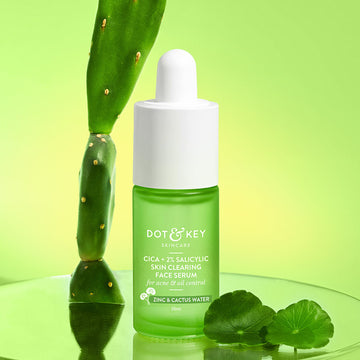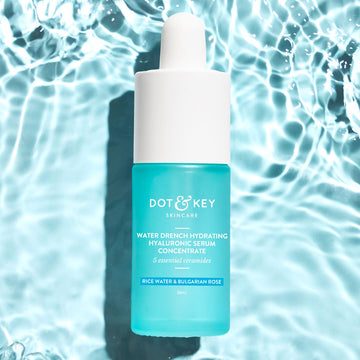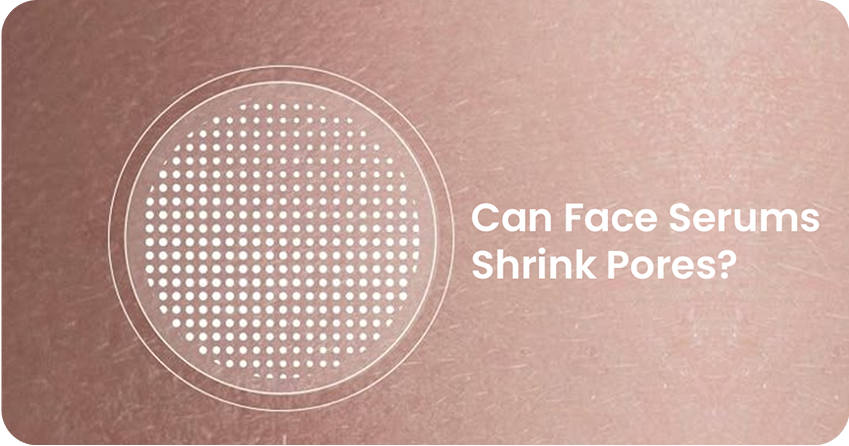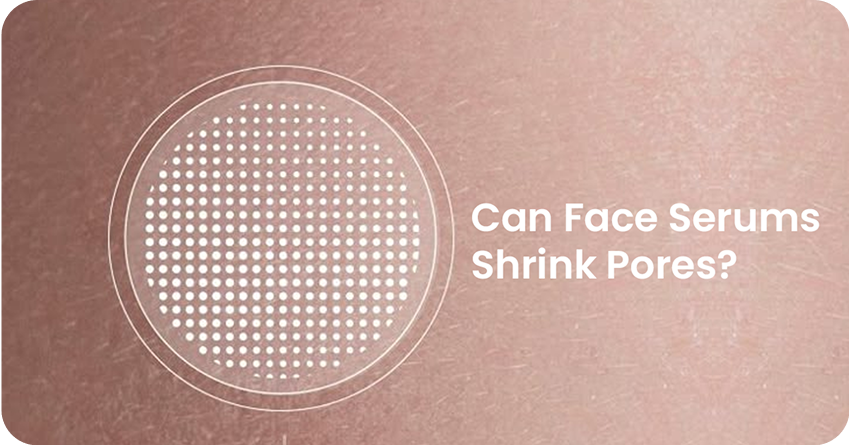
Visible pores are a common skin concern—especially on the nose, cheeks, and forehead—and are often linked to excess oil, acne, or skin ageing. In the quest for smoother, more refined skin, many people reach for face serums packed with actives like niacinamide, salicylic acid, or retinol, hoping to "shrink" their pores. But can face serums actually reduce pore size, or is it just clever marketing?
In this article, we’ll break down the science behind what really causes large pores, what dermatologists say about pore-minimizing serums, and which ingredients are proven to help. Plus, you’ll get practical tips to reduce the appearance of pores—without falling for overpromised results.
Whether you’re dealing with clogged pores or simply want a more polished, smooth complexion, this guide will help you understand how serums can support your skin goals—realistically and effectively.
What Are Pores and Why Do They Appear Large?
Pores are tiny openings in the skin that house hair follicles and allow sebum (natural oil) and sweat to reach the surface. They’re essential for skin health but can appear enlarged due to:
- Excess Sebum: Overactive oil glands, common in oily or combination skin, stretch pores and make them more visible.
- Clogged Pores: Dead skin cells, oil, and debris (e.g., blackheads) accumulate, widening pore openings.
- Loss of Elasticity: Ageing reduces collagen and elastin, causing pores to sag and appear larger.
- Genetics: Pore size is partly hereditary, varying by skin type and ethnicity.
- Sun Damage: UV rays break down collagen, enlarging pore appearance.
A 2018 study in The Journal of Investigative Dermatology found that oily skin types had 20% larger pore diameters due to sebum overproduction, while a 2019 study in Clinical, Cosmetic and Investigational Dermatology linked UV-induced collagen loss to a 15% increase in visible pore size with age.
Dr. Sarah Kim, a dermatologist, explains: “Pores don’t physically shrink or expand like muscles, but their appearance can be minimized by addressing oil, debris, and skin structure.”
Can Face Serums Shrink Pores?
Dermatologists clarify that serums cannot permanently shrink pores, as their size is largely determined by genetics and skin structure. However, serums can minimize the appearance of pores by:
- Reducing oil production: Controls sebum to prevent pore stretching.
- Clearing clogs: Exfoliates debris to reduce pore blockages.
- Improving elasticity: Boosts collagen to tighten skin around pores.
- Hydrating and plumping: Smooths skin texture for less visible pores.
- Reducing inflammation: Calms acne-related swelling that highlights pores.
Dr. Michael Lee, a dermatologist, notes: “Serums can’t change your pore size, but they can make pores look smaller by keeping them clean, balanced, and supported by healthy skin.”
What the Research Says
A 2020 study in Journal of Cosmetic Dermatology found that serums with niacinamide reduced pore appearance by 18% after 8 weeks by regulating sebum and improving texture. Another 2019 study in Dermatologic Surgery showed that retinol serums enhanced collagen production, reducing visible pore size by 12% after 12 weeks.
While these improvements are significant, they’re about appearance, not structural shrinkage. Serums work best when paired with a consistent routine, including cleansing and sun protection.
How Face Serums Minimize Pore Appearance
Serums address factors that make pores look larger through targeted ingredients. Here’s how they work:
- Oil Control: Ingredients like niacinamide regulate sebum, preventing pores from stretching due to excess oil.
- Exfoliation: Salicylic acid or AHAs (e.g., glycolic acid) remove dead skin and debris, keeping pores clear.
- Collagen Boost: Retinol or peptides stimulate collagen, tightening skin around pores for a refined look.
- Hydration: Hyaluronic acid plumps skin, smoothing texture and reducing pore visibility.
- Anti-Inflammatory Effects: Niacinamide or centella asiatica calm acne-related inflammation, minimizing pore prominence.
A 2021 study in Dermatology and Therapy found that combining exfoliating and hydrating serums reduced pore appearance by 20% after 6 weeks, highlighting the synergy of multiple mechanisms.
Best Face Serum Ingredients for Minimizing Pores
Dermatologists recommend these ingredients to make pores look smaller, backed by research:
Niacinamide
- Role: Regulates sebum, reduces inflammation, and improves barrier function.
- Effect: Minimizes oiliness and smooths texture for less visible pores.
- Research: A 2018 study in The British Journal of Dermatology showed 5% niacinamide reduced pore size appearance by 15% and sebum by 20% after 8 weeks.
- When to Use: Morning or night, 2-5% concentration.
- Expert Tip: Ideal for oily or combination skin; pair with SPF in the morning.
Salicylic Acid
- Role: Exfoliates inside pores, clearing oil and debris.
- Effect: Reduces blackheads and prevents clogging, refining pore appearance.
- Research: A 2020 study in Journal of Cosmetic Dermatology found 0.5-2% salicylic acid reduced pore congestion by 25% after 6 weeks.
- When to Use: Night, 2-3 times per week, 0.5-1% for beginners.
- Expert Tip: Start slowly to avoid irritation; follow with a soothing moisturizer.
Retinol/Retinoids
- Role: Boosts cell turnover and collagen, tightening skin around pores.
- Effect: Smooths texture and reduces sagging pores, especially with ageing.
- Research: A 2019 study in Dermatologic Surgery showed 0.3% retinol improved pore appearance by 12% after 12 weeks.
- When to Use: Night, 2-3 times per week, starting at 0.1-0.3%.
- Expert Tip: Buffer with moisturizer to reduce purging or irritation; use SPF daily.
Hyaluronic Acid
- Role: Hydrates and plumps skin, smoothing texture.
- Effect: Reduces pore visibility by creating a hydrated, even surface.
- Research: A 2019 study in Journal of Cosmetic Science found hyaluronic acid increased hydration by 30%, enhancing skin smoothness after 4 weeks.
- When to Use: Morning and/or night, on damp skin.
- Expert Tip: Apply to damp skin and seal with moisturizer for maximum effect.
Vitamin C
- Role: Brightens skin, boosts collagen, and protects against UV damage.
- Effect: Enhances skin firmness and clarity, subtly refining pores.
- Research: A 2020 study in The Journal of Clinical and Aesthetic Dermatology showed 10% vitamin C improved skin texture by 10% after 8 weeks.
- When to Use: Morning, 5-15% concentration, followed by SPF.
- Expert Tip: Start with lower strengths for sensitive skin to avoid irritation.
Dr. Emily Chen, a dermatologist, advises: “Niacinamide and salicylic acid are top choices for oily skin, while retinol and hyaluronic acid suit ageing or dry skin. Combine for best results.”
How to Use Face Serums to Minimize Pores
To maximize serums’ pore-minimizing effects, follow these research-backed tips:
-
Cleanse Gently:
- Use a mild, pH-balanced cleanser (pH 5–6) to remove oil and debris without stripping the barrier. A 2019 study in Journal of Cosmetic Science showed clean skin improved serum absorption by 15%.
- Gel cleansers for oily skin; creamy ones for dry/sensitive.
-
Apply Correctly:
- Use 4–5 drops or a pea-sized amount, patting gently into the face and neck.
- For hydrating serums (e.g., hyaluronic acid), apply to damp skin to lock in moisture. A 2020 study in Dermatology and Therapy found damp application increased hydration by 20%.
- Wait 30–60 seconds before layering moisturizer or SPF to prevent pilling.
-
Layer Strategically:
- Apply serums after cleansing/toning, before moisturizer, from thinnest to thickest (e.g., niacinamide before retinol).
- Morning: Vitamin C or niacinamide, followed by lightweight moisturizer and SPF 30+.
- Night: Retinol or salicylic acid, followed by a non-comedogenic moisturizer.
-
Start Actives Slowly:
- Introduce retinol or salicylic acid 1–2 nights per week, increasing to 3–4 if tolerated, to minimize purging. A 2019 study in Dermatologic Therapy showed gradual use reduced irritation by 25%.
- Buffer with moisturizer (sandwich method) if sensitivity occurs.
-
Use SPF Daily:
- Apply broad-spectrum SPF 30+ (two finger-lengths for face and neck) every morning, reapplying every 2 hours outdoors, to prevent UV-induced collagen loss. A 2019 study in The Journal of Investigative Dermatology showed SPF reduced pore visibility by 10% by protecting skin structure.
-
Be Consistent:
- Use serums daily (or as directed) for 6–12 weeks to see results. A 2020 study in Journal of Cosmetic Dermatology found consistent use improved pore appearance by 18%.
- Expert Tip: Dr. Jane Smith says: “Consistency and sun protection are crucial. Serums refine pores over time, but UV damage can undo your progress.”
Benefits of Face Serums for Pore Appearance
Serums offer several advantages for minimizing pore visibility, making them a valuable tool in your routine:
-
Refined Texture:
- Clear pores and smooth skin, reducing prominence. A 2020 study in Dermatology and Therapy showed niacinamide improved texture by 15% after 8 weeks.
-
Reduced Oiliness:
- Control sebum to prevent pore stretching, ideal for oily skin. A 2018 study in Journal of Cosmetic Dermatology found salicylic acid reduced oil by 20%.
-
Improved Elasticity:
- Boost collagen to tighten skin, minimizing sagging pores. A 2019 study in Dermatologic Surgery showed retinol enhanced firmness by 12%.
-
Clearer Pores:
- Prevent blackheads and clogs, keeping pores less noticeable. A 2021 study in Clinical, Cosmetic and Investigational Dermatology found BHAs cleared pores by 25%.
-
Enhanced Radiance:
- Brighten and hydrate skin, creating a polished look that distracts from pores. A 2020 study in The Journal of Clinical and Aesthetic Dermatology showed vitamin C boosted radiance by 10%.
Limitations and Realistic Expectations
While serums are effective, they have limitations:
- No Permanent Shrinkage: Pore size is genetically fixed; serums only minimize appearance.
- Gradual Results: Visible improvements take 6–12 weeks, requiring consistency.
- Not a Cure-All: Severe acne, deep scars, or very large pores may need professional treatments (e.g., lasers, microneedling).
- Maintenance Required: Pore appearance can revert without ongoing care and SPF.
Dr. Chen notes: “Serums are excellent for refining pores, but don’t expect miracles. For dramatic results, combine with dermatological procedures.”
Conclusion
Face serums cannot permanently shrink pores, but they can significantly minimize their appearance by controlling oil, clearing clogs, boosting collagen, and hydrating skin. Dermatologists recommend serums with niacinamide, salicylic acid, retinol, or hyaluronic acid for refined texture and less visible pores. By applying serums correctly, building a gentle routine with SPF, and staying consistent for 6–12 weeks, you can achieve a smoother, polished complexion.
Use these research-backed tips, tailor your serum to your skin type, and consult a dermatologist for stubborn concerns. Your pores will look refined, and your skin will glow with confidence.
Frequently Asked Questions (FAQs)
1. How long does it take for serums to minimize pore appearance?
Expect subtle improvements in texture and oiliness in 2–4 weeks, with significant pore refinement in 6–12 weeks, depending on the serum (e.g., niacinamide, retinol).
2. Can serums make pores look bigger?
Some serums (e.g., retinol, salicylic acid) may cause temporary purging, making pores appear more prominent for 4–6 weeks. Comedogenic serums can clog pores, worsening the appearance.
3. Are serums enough to minimize pores?
Serums help but work best with a routine including gentle cleansing, moisturizing, and daily SPF. Severe cases may require dermatological treatments.
4. Can teens use pore-minimizing serums?
Yes, teens can use gentle serums like niacinamide or low-strength salicylic acid (0.5%) to control oil and clear pores, but avoid retinol unless prescribed.
5. Should I use a pore-minimizing serum morning or night?
Depends on the ingredient: niacinamide or vitamin C in the morning (with SPF); retinol or salicylic acid at night. Hyaluronic acid works both times.

